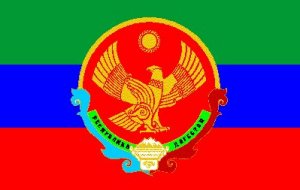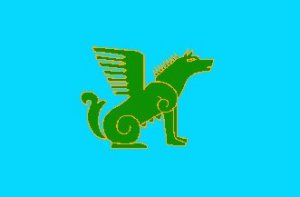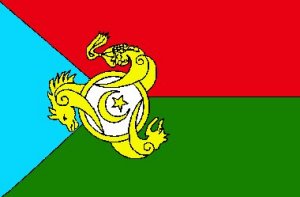
DAGESTAN
Aguls
The Aguls are an indigenous polpulation of Dagestan. The oldest reference to the Aguls is found in an Armenian source from 7th c. Arabs invaded the area already from the 7th c., and brought with them islam. Mongol-tatar influence was considerable from the 13th c.
According to the Gulistan Peace Treaty of 1813 between Russia and Iran, the territory of Dagestan was annexed to Russia. As a consequence there was stronger Russian presence in the Agul territory.
In 1921 they were included in the Dagestan Autonomous Soviet Socialist Republic. Merging with the neighbouring Lezgins caused a decline in the population between 1920s and 1950s, but later the population went up again. Anti-Russian feelings caused by years of manipulation and russification efforts by the Soviet government. Low participation in the state schools resulted in low education level.
The Republic of Dagestan declared its sovereignty in 1993 and a constitution was adopted in 1994.
Avars
Avar groups were described by Pliny the Elder in the first century. According to Avar tradition, their area was invaded by Arabs in the 8th c. and they brought with them Islam. The area was overrun again in the 13th c. - this time by the Mongols. But already by the 14th c. independent principalities, especially the Avar Khanate, began to break away from the control of the Golden Horde. The Avar Khanate grew strong and reached the peak of its power in the 17th and 18th centuries, although it was ridden by internal tribal feuds.
In 1803, Russia took advantage of these feuds, and was able to establish a protectorate over Avar Khanate. The Russian inflence led to an Avar rebellion in 1821. Russia's response was simply to abolish the protectorate and instead exercise more direct control.
The Avars rebelled again in 1834 under Imam Shamil, protesting against the immigration of state-supported Russian settlers. Independence for Dagestan was declared and the Koran was introduced as the law of the land. Thus, the Shamil regime fought both the Russian Orthodox Church and the older animistic beliefs. The Shamil Revolt collapsed in 1858, but the Avars already hated everything Russian. In 1864, the Russians changed the Avar Khanate into the Avar District.
In 1920, the Mountain Autonomous Republic was established, with Arabic as the official language. Avars, together with other non-Arabic speaking peoples of the region, resisted the government, and in 1921 the state created the Dagestan ASSR as an ethnic sub-division of the larger republic.
In the late 1920s, the Soviet government imprisoned and executed local religious leaders in an attempt to strangle Muslim faith. Avar language was latinized, and then switched to the Cyrillic alphabet in 1938. At the same time Russian was made the only language of instruction in the schools. In the 1960s, teaching Avar at all was prohibited. The authorities' russification attempts, anti-Islamism, forced collectivisation, and general oppression has simply served to strengthen the Avars' ethnic identity and their hatred towards the Russians.
Dargins
The Dargins are considered to be an indigenous people of the Caucasus, living relatively isolated from foreign influence until the beginning of the great Arab conquests in the 8th c., when they were exposed to Islam for the first time. From the 14th c., they were controlled politically by the Kaytaks, who are now considered a sub-group of Dargins.
Although introduced to Islam in the 8th c., the Dargins remained primarily animist until the 15th c., when Muslim influence became stronger, with Persian traders coming in from the south, and the Golden Horde increasingly pressing from the north. In the 16th c., the Ottoman Turks occupied the area, and also helped to consolidate Islam. By the 19th c., all but a few of the Dargins had been converted to Islam. Fundamentalist Muslim tendencies are strong among the Dargins, together with a profound anti-Russian sentiment.
Just after the Bolshevik revolution, the government in Moscow established the Mountain Autonomous Republic, with Arabic as official language. Dargins and other peoples rebelled, and in 1921, the Dagestan autonomous soviet republic was established, including the Dargin population. Soviet policy towards this region was harsh and unstable in the 1920s, with incidences of purges against Muslim leaders, changes in official language and a general "divide-and-rule" approach. Things became more stable after 1928, when Dargin, Avar, Lezgin and Azerbaijani were all made official languages. However, gradually, Russian language was imposed in schools and administrations.
The Dargins resisted russification by simply refusing to participate in programs to relocate them out of the highlands and into lowland towns and collective farms. Thus, the majority of the Dargins still maintain a traditional lifestyle.
After 1991, in the wake of the collapse of the Soviet Union, anti-Russian secessionist nationalism is gaining strength among the Dargins.
For the most part, the relations between the various ethnic groups of Dagestan are remarkably less competitive than those of the titular nationalities in the other North Caucasian republics. This may change if nationalism, as expressed in the concept of the national state, gains more currency among the larger national groups, such as the Dargins.
Laks
The Laks are one of the indigenous groups of the Caucasus, probably descendants of the Gumik tribe. They were first introduced to Islam through Arab traders in the 8th c., but the majority kept their traditional beliefs. More Muslim influence came with Persian traders in the 15th c., and with Mongol invasions in the 16th and 17th c. The Laks were slower than most other Dagestani peoples in adopting Islam, however, and not until the mid-1800s they had been thoroughly converted, religiously and culturally. Coming late, they still developed a very strong and devout faith.
The Laks had their own semi-independent principality, known as the Shamkhalat, on the Southern border of the Golden Horde from the 14th c. They expanded to the northeast in the 15th c., and came to control a large amount of Kumuk land.
In the beginning of the 19th c., the Laks fought to resist the increasing Russian influence, but to no avail. In 1865, Russia abolished the Shamkhalat and brought Lak territory under direct Russian administrative control. Russian settlers started pouring into Dagestan already from around 1800-1810, and this influx triggered the Shamil rebellion in 1834. The rebellion, which was crushed in 1858, strengthened the ethnic identities of the various peoples, radicalized and strengthened Islam in the area, and produced a deep hatred for everything Russian.
Just after the Bolshevik revolution, the government in Moscow established the Mountain Autonomous Republic, with Arabic as official language. Laks and other peoples rebelled, and in 1921, the Dagestan autonomous soviet republic was established as an ethnic subdivision of the larger republic, including the Lak areas.
Efforts at russification of the Lak population, and sovietizing the Lak economy, increased poverty and strengthened anti-Russian sentiments.
The Laks enjoy high prestige among other Dagestani peoples because of their historical experiences, and are less plagued by internal divisions, because tribal and clan divisions are nearly non-existent. The Lak territory has also been widely recognized as the religious centre of Islam for Dagestani Muslims.
Lezgins
The Lezgin ethnic group resulted from a merger of the Akhty, the Alty and Dokus Para federations, and some clans from among the Rutuls. Although they were first introduced to Islam perhaps as early as the 8th c., the Lezgins remained primarily animist until the 15th c., when Muslim influence became stronger, with Persian traders coming in from the south, and the Golden Horde increasingly pressing from the north. In the 16th c., the Ottoman Turks occupied the area, and also helped to consolidate Islam. By the 19th c., the Lezgins had all been converted to Islam, and they have since then been very devout in their faith.
The Lezgins did not form their own country. Some were part of the Kuba Khanate in Azerbaijan, some were under control of the Derbent Khanate. The Lak Kazi Kumukh Khanate contrtolled the Lezgins for a time in the 18th c., but from 1812 onwards, the Russians took over. They created the Kiurin Khanate, later to become the Kiurin district.
Fundamentalist Muslim tendencies are strong among the Lezgins, together with a profound anti-Russian sentiment. Just after the Bolshevik revolution, the government in Moscow established the Mountain Autonomous Republic, with Arabic as official language. Lezgins and other peoples rebelled, and in 1921, the Dagestan autonomous soviet republic was established, including the Lezgin areas.
The Lezgins resisted russification by simply refusing to participate in programs to relocate them out of the highlands and into lowland towns and collective farms. Thus, the majority of the Lezgins still today maintain a traditional lifestyle.
Glasnost and Perestroyka policies in the late 1980s, early 1990s, together with economic collapse, and the fall of the Soviet Union, exacerbated nationalistic tensions and unleashed centrifugal ethnic forces. The Lezgins, as so many other ethnic groups, became more strident in their demands for independence from Moscow and for self-determination.
For the most part, the relations between the various ethnic groups of Dagestan are remarkably less competitive than those of the titular nationalities in the other North Caucasian republics. This may change if nationalism, as expressed in the concept of the national state, gains more currency among the larger national groups, like Lezgins or Dargins.
Rutuls
Before the Russian Revolution, the Rutuls were generally classified as Lezgins, together with various other ethnic groups of the highlands southwest of the Caspian Sea like Lezgins proper, Aguls and Tabasarans.
The Rutuls have lived in the region at least since the 5th c. They were first introduced to Islam through Arab traders in the 8th c., and were thoroughly converted to Islam by the 19th c. after exposure to Persian traders in the 15th c., and with Mongol invasions in the 16th and 17th c. They have developed a very strong and devout Sunni Muslim faith.
From the 16th through the 18th c., the Rutuls constituted a powerful political confederation known as Rutul Mahal. Ethnic Russian settlers started pouring into the area already in the beginning of the 19th c., and the Rutuls resisted the Russian expansion. In 1838, during the widespread Shamil rebellion, the Rutul Aga-Bek led an uprising against Russia. They were no real match for the Russians, though, and the latter crushed the movement and formally annexed the Rutul Mahal in 1844. Fundamentalist Muslim tendencies are strong among the Rutuls, together with a profound anti-Russian sentiment.
Just after the Bolshevik revolution, the government in Moscow established the Mountain Autonomous Republic, with Arabic as official language. Rutuls and other peoples rebelled, and in 1921, the Dagestan autonomous soviet republic was established as an ethnic subdivision of the larger republic.
The forced assimilation to merge the Rutuls and the Tsakhurs with the Azerbaijanis, together with the general russification efforts increased the Rutuls' hatred towards everything Russian. It also led to a relatively sharp , but temporary, decrease in the Rutul population.
In the 1960s and -70s, the Soviet government succeeded in establishing government cooperatives and collectivizing many Rutul cattle herds and pasture lands, thereby also producing changes in the Rutul traditional way of life.
Tabasarans
Before the Russian Revolution, the Tabasarans were generally classified as Lezgins, together with various other ethnic groups of the highlands southwest of the Caspian Sea like Lezgins proper, Aguls and Rutuls. The Tabasarans are an indigenous people of the Caucasus.
They were first introduced to Islam through Arab traders in the 8th c., and were probably thoroughly converted to Islam around 1800-1850 after exposure to Persian traders in the 15th c., and with Mongol invasions in the 16th and 17th c. They have developed a very strong and devout Sunni Muslim faith.
The Tabasarans developed a powerful principality of their own in the 15th c. It was known as the Maisumat of Tabasaran, and it made up one of the three great political states in Dagestan. The area came under Russian domination in the early 19th c.
Fundamentalist Muslim tendencies are strong among the Tabasarans, together with a profound anti-Russian sentiment. Just after the Bolshevik revolution, the government in Moscow established the Mountain Autonomous Republic, with Arabic as official language. Tabasarans and other peoples rebelled, and in 1921, the Dagestan autonomous soviet republic was established as an ethnic subdivision of the larger republic.
Efforts at russification of the Tabasaran population, and at sovietizing their economy, increased poverty and strengthened anti-Russian sentiments. However, The Tabasarans resisted russification by simply refusing to participate in programs to relocate them out of the highlands and into lowland towns and collective farms. Thus, the majority of the Tabasarans still today maintain a traditional lifestyle.
Tsakhurs
The Tsakhurs are an indigenous people of the Caucasus. They have lived in the most geographically remote valleys in the mountains, more or less isolated from the outside world. However, Muslim Arab influence reached them in the 8th c., during the Arab invasion of the Caucasus. More Muslim influence came with Persian traders in the 15th c., and with Mongol invasions in the 16th and 17th c. By the mid-19th c., they had been thoroughly converted, religiously and culturally, to Sunni Islam. They still have a very strong and devout faith.
By the 15th c., the Tsakhurs had consolidated themselves politically in a confederation of Tsakhur groups, led by a sultan. When Russian expansion first reached the Tsakhurs in 1803, the Tsakhur Sultanate was allowed to exist officially and retain a limited autonomy.
As large numbers of ethnic Russian settlers started pouring into Dagestan already from around 1800-1810, the Tsakhurs and other indigenous groups resisted. The Russian influx triggered the Shamil rebellion in 1834. When the Shamil Revolt reached the Tsakhurs in in 1844, Sultan Daniel-Bek supported the rebels against the Russians. The Russians' answer was to deport the entire Tsakhur population to Azerbaijan in 1852. They were not allowed to return until 1860, by which time some had decided to stay in Azerbaijan. The Shamil rebellion, which was crushed in 1858, strengthened the ethnic identities of the various peoples, radicalized and strengthened Islam in the area, and produced a profound hatred for everything Russian.
Just after the Bolshevik revolution, the government in Moscow established the Mountain Autonomous Republic, with Arabic as official language. Tsakhurs and other peoples rebelled, and in 1921, the Dagestan autonomous soviet republic was established as an ethnic subdivision of the larger republic, including the Tsakhur areas.
Efforts at russification of the Tsakhur population, and sovietizing their economy, increased poverty and strengthened anti-Russian sentiments.

Nogay
The Nogay first emerged as an ethnic group in the late 13th c., as descendants of the Golden Horde, specifically linked to a certain Emir Nogay. He was a Mongol general, controlling a vast area including the steppes west of the Caspian Sea. After he died in 1300, his region disintegrated, but the Nogay sense of ethnic identity survived.
In the 16th c., when tsar Ivan IV conquered Astrakhan and Kazan, the Nogay Horde split in two. One group was called the Great Horde and lived in the Lower Volga region, whereas the Little Horde occupied lands further South-West. The Hordes reunited under Crimean Tatar rule in 1634, as the Great Horde was driven southward by the Kalmyks.
During the 1860s, when significant Russian expansion into Nogay territory began, many Nogay emigrated to Turkey, Crimea and the Balkans. By the late 19th and early 20th c., the Nogay were being assimilated by surrounding Russians, Circassians, Kumyks, and Crimean and Astrakhan Tatars.
In the 1950s and -60s, the Nogay economy and way of life changed as state cooperative enterprises and collective farms became the norm, at the expense of their traditional way of life.

Kumuks
The Kumuks probably originated from a mixing of the indigenous Caucasus peoples with Turkic-speaking people, that started with the 5th c. migrations of Turkic and Mongolian people heading west across the steppes of Central Asia. Between the 11th and 13th c., the Kumuks strengthened their sense of ethnic identity and moved into the lowlands of the steppes in the North Caucasus. Under the Mongol pressure in the two following centuries, they converted to Sunni Islam. During the 15th and 16th c., the Kumuks established their own political entity, the Shamkhalat of Tarki, and within a century, they controlled many Avars and Dargins. Many individuals of other groups (Chechens, Avars, Dargin, Nogay) also adopted Kumuk as a second language. During the 17th c., the Kumuk ethnic identity was further strengthened in the face of ethnic Russian expansion into the Central Asian steppes, and intensifying power struggles in the region. The Kumuks turned to the Safavid dynasty of Persia for help, and during that period, a number of Kumuks - especially urban workers - converted to Shia Islam.
When Peter the Great occupied Derbent in 1722 and defeated the Safavid dynasty, it was the beginning of the end for Kumuk independence. Some autonomy was retained until 1859, when the Russians finally crushed the Shamil rebellion, and permanently brought the various ethnic groups of Dagestan under Russian sovereignty. The Kumuk Shamkhalat was formally ended in 1867. The Shamil rebellion also produced a division among the Kumuks, as the northern Kumuks fought against the Russians, the central Kumuks sided with the Russians, while the southern Kumuks remained neutral.
The rate of urbanisation is high among the Kumuks, but still, they have maintained a strong sense of ethnic identity. The vast majority of them use Kumuk as their first language, and Kumuk is actually also being adopted by large numbers of individuals of neighboring groups, especially Dargins and Avars.
In 1990, a number of Kumuks founded Tenglik, or the Kumuk People's Movement, led by Salav Aliyev. Together with Azerbaijanis, Balkars and Nogay, for the protection of Turkic interests.
Source: Norwegian Institute of International Affairs [NUPI] - Centre for Russian Studies
Back to Caucasus main page
|





